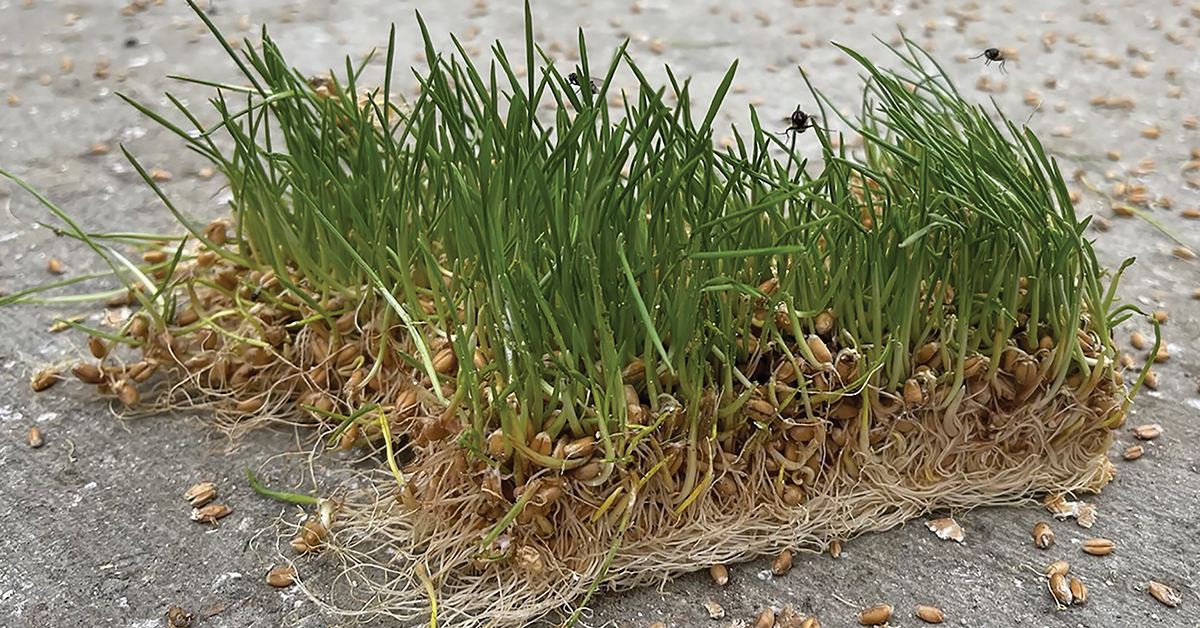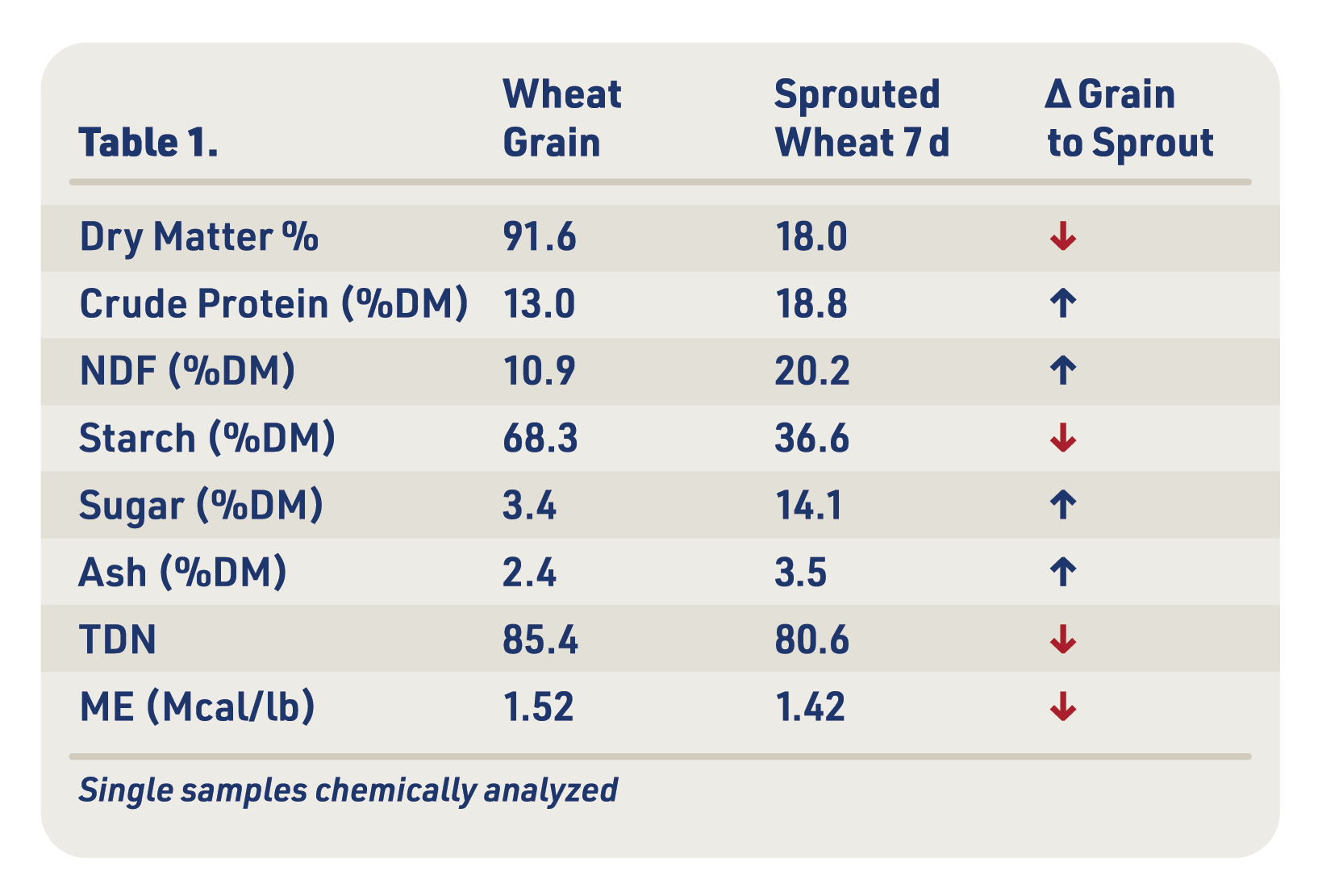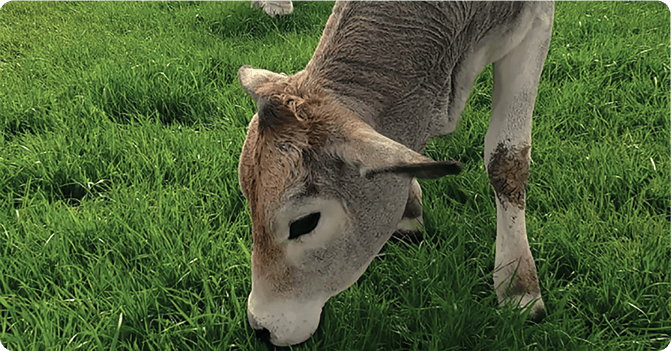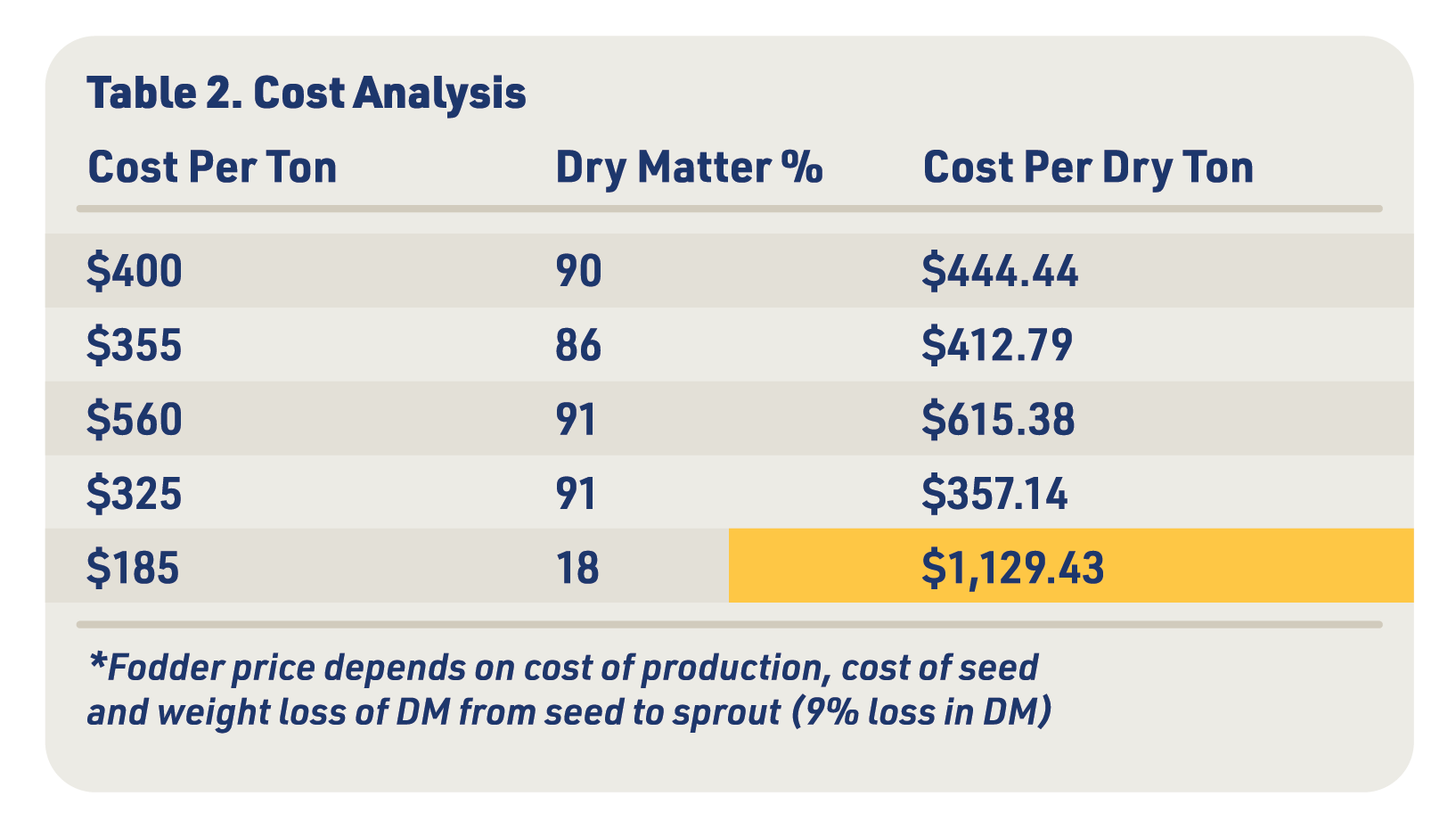
In recent months many have been approached by someone selling some "new" feed with grand claims of improving animal performance, reducing the need for farmland while using less water and cutting feed cost.
Fodder, or sprouted grains, is a feed concept that actually dates back to at least the 1800’s according to Oregon State University. As of late there seems to be a generational rebirth of this feed that is often accompanied with grandiose claims. What is it? What does it do? What is it worth? What are the benefits? What are the limitations?
What is Fodder Livestock Feed?
Fodder by definition is livestock feed, but in this article, it refers to sprouted grains, typically wheat and barley. It is is typically sprouted in water alone and generally grown indoors for a short period of time from four to ten days before being fed fresh to livestock.
There are some interesting changes in nutrients during the seven days that the seeds are cultivated (see Table 1). The wheat seed contains high levels of starch that shifts to fiber (NDF) and crude protein increases.
The added water significantly decreases dry matter percent, and this is a key factor in calculating value and the claim that it decreases the need for farmland (discussed later in this article). Additionally, IFA's nutrition team found a decrease in yield (seed to sprout), decrease in energy and an increase in ash (due to losing weight of digestible nutrients and retaining minerals, and potential minerals in the water) when reviewing this feed.

Does Fodder Improve Feed Efficiency?
To analyze this feed, nutritionists have fed fodder in diets for beef cattle and dairy cows and while some of the results were promising, others were challenging. We tended to see an increase in feed efficiency in both beef and dairy diets. The beef cattle gained more weight on the same amount of feed and the dairy cows produced more milk per unit of feed.
When properly formulated in our diets, and in a limited review of studies, we see a three to nine percent improvement in feed efficiency. The improvement in feed efficiency was seen when the fodder was included less than 15% and there may be advantages to feeding higher levels. This is a promising observation, but is often overcome by the price of the fodder.
The fatty acid profile also improved and arguably benefits the end consumer of meat and milk. The fiber has good digestibility. We also saw improvements in transition dairy cows from dry period to lactation.
Cattle seem to prefer consuming this feed. Changing the number of growing days can change nutrient distribution in the fodder and meet producer specific needs. The feed can replace some forage and other concentrates. There are also enzymes, some vitamins and other bioactive micronutrients in this living feed may have been measured but more research is needed.

Should You Include Fodder in a Feeding Program?
While there are some benefits to fodder, the challenges are also present.
- There are a low but growing number of research studies.
- The product is often too expensive (see Table 2, but consider that different systems cause a major shift up or down in price) when adjusted to cost per dry ton.
- Unwanted mold and other microbial growth can cause health and production issues in livestock and has been a major challenge with some improvement.
- Breaking the root mat apart to mix into a ration. We have seen sorting and wasted fodder when the pieces are too large.
- Fodder is wet and causes some limitations. In a high silage (high water) ration, the addition of wet fodder may decrease feed intake. Also, it needs to be fed fresh and seems to grow unwanted microbes if the time between harvest and feeding is too long.
- Navigating all the claims and sales pitches from research observations. It is important that fodder is properly formulated into a balanced diet. As with all feeds, livestock need proper management for best results.

Fodder in Livestock Nutrition
From my perspective this is another way of processing grain with new benefits and challenges. A major obstacle exists in adopting the feeding of fodder. Unlike a new car, you can’t test drive these systems and may be obligated to buy it before you try it. There is often a significant cost assumed initially by the producer or the company selling the system. It will cost significantly more than bad contracts on feed commodities if the system doesn’t perform.
The last caution relates to the claim that fodder will replace farmable acres and reduce water use. If 100 dry pounds of wheat produces 91 dry pounds of sprouted wheat, we may need more farm ground. The exception is improving the feed efficiency. In theory, if a ration with 10% fodder improves the digestibility of all other feeds in the ration by 10%, or increase outputs, there is a net gain.
My takeaways from this are simple. Fodder, if grown and priced well can be an excellent feed. If a dry pound of fodder is close to the price of a dry pound of the ration, it is worth considering. In my experience, the improved feed efficiency and increased value of animal proteins are important in determining a return on this investment.
Try it before you buy it. Ask companies if they have a portable unit to see if this feed fits into your program. Find support when implementing this into your feeds by qualified people. On this and with most decisions, ask questions and listen to those who have used it, those who have failed and those that have flourished.
Find an IFA Feed & Nutrition Advisor in your area
Written by Laun Hall, PhD, IFA Nutritionist and originally published in the IFA Cooperator magazine (vol. 89, no. 1) Spring 2023.
Laun Hall is an experienced and knowledgeable IFA Nutritionist with a passion for cattle. Laun earned his Bachelor of Science degree in Animal, Dairy and Veterinary Sciences from Utah State University with a minor in biology and an emphasis in Grazing Systems for beef cattle. During his Undergraduate he conducted a study on pasture evaluation and legumes. Following this earned his Master of Science at the University of Arizona in animal science with an emphasis on beef feedlot nutrition and neonatal Holstein calves. Laun then finished his PhD in Animal Science at the University of Arizona in Dairy nutrition and Environmental Physiology. He joined IFA in 2014 helping intermountain producers as an animal nutritionist.

